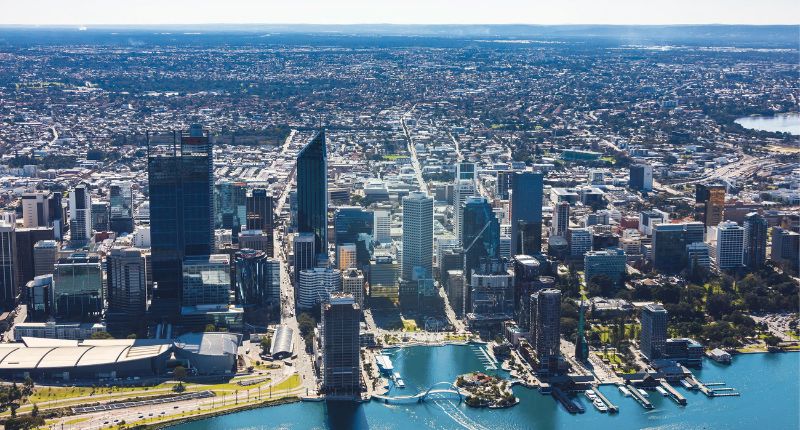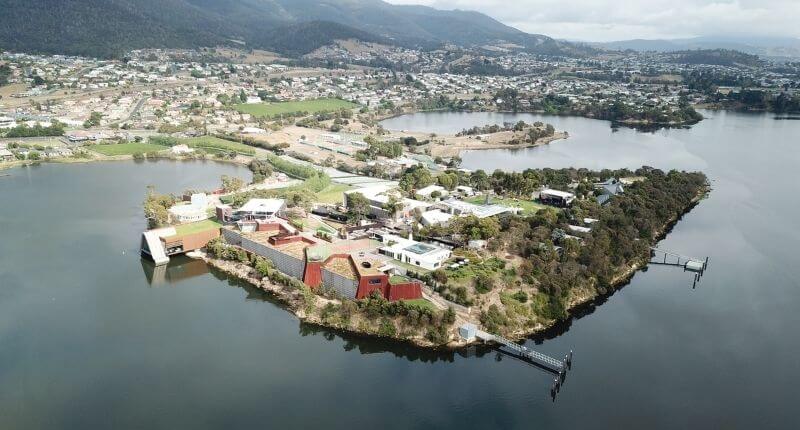- Overseas immigration is above the 10-year average in Tasmania, Northern Territory, ACT and South Australia.
- Interstate migration numbers are higher than average in Queensland, Western Australia and South Australia.
The record surge in immigration is already putting rental markets under extreme pressure in most areas, however, the smaller cities and regional hubs could be on the verge of an extreme rental crisis according to an expert.
The latest immigration data from AreaSearch shows that immigration levels are on track to exceed the October federal budget’s forecast and with the number of new arrivals expected to reach more than 300,000 in the next 12 months, the crisis for renters in regional cities will only continue to get worse.
Highlighting the challenge for the housing market, is the fact that overseas immigration levels are already running ahead of the 10-year average in Tasmania (2,745), Northern Territory (2,134), ACT (3,117) and South Australia (12,077).
Meanwhile, interstate migration numbers are substantially higher than average in Queensland, Western Australia and South Australia.

Smaller cities are struggling with overflow
Director of Mecca Property Group, Abdullah Nouh, said the number of new arrivals is already putting our smaller capital cities under extreme pressure.
Mr Nouh said, “Our national vacancy rate is 1.3 per cent, but if you look at some of our smaller cities that would accept a regional migration visa, or a skilled migrant visa, the vacancy rate is even tighter.
“The vacancy rate in Perth at the moment is 0.5 per cent.
“If you look at where we were 12 months ago, it was up around that 1 per cent mark.
“And if you look at where we were two years ago in 2020, it was at the 2.2 per cent mark, so you could see that the rental market in Perth is, is quite stretched” he said.

Likewise, Adelaide and Hobart are at 0.6 per cent, Mr Nouh said, “Brisbane was sitting at around 0.7-0.8 per cent towards the end of last year, which is still a pretty tight market.”
Tens of thousands more rentals needed
Mr Nouh said markets like Perth, Hobart and Adelaide have seen their rental stock plunge over the last 12 months making life incredibly challenging for renters.
He said, “A large portion of the expected 300,000 new arrivals in 2023 are looking to rent so that’s going to put further strain on our rental market and there’s no relief in sight.
“With the drop in vacancy rates in these already really tight markets, in places like Peth and Adelaide, they’ve already seen rents increase anywhere between 10-20 per cent in the past few years.
“Unfortunately, for renters, there’s just going to be more competition which means further price hikes” Mr Nouh said.
On top of the influx of overseas arrivals, interstate migration is also contributing to the pressure on housing. Queensland has seen a significant increase in new migrants, with 55,000 people moving to the state, up from its long-term average of 21,000 according to AreaSearch.
South Australia has also seen a significant rise in migration, with 1,025 more people settling in the state compared to its usual net loss. While Western Australia has seen a similar trend, with an increase of 10,791 migrants over the past 12 months.
More incentivization will shift investors
Mr Nouh has been actively buying properties in these smaller capital city markets and said the current tight conditions present an opportunity to encourage more investors to get into the market in these areas.

He said, “One of the reasons we’re in the position is due to investor inactivity over many years.”
“In 2015 and 2107, APRA made some changes to the serviceability criteria that made it more difficult for borrowers to take out more loans.
“That inactivity is an important factor contributing to the rental crisis” he added.
According to Mr Nouh, there’s not one particular solution to the crisis but investors need to be incentivised to own rental properties: “To increase supply as we see demand increasing investors get treated differently to other borrowers.
“Investors have to pay higher interest rates, they pay more taxes, there’s more regulation and more red tape so it’s harder to investors into the market so over time that reduces the pool of investors in the market” he said.
Mr Nouh said there are steps governments could take to encourage investment: “Another important thing that needs to happen is that there needs to be more affordable housing.
“There’s not enough money being put into increasing supply and that’s left to private investors, yet they’re the ones that are getting taxed the most and hold the most expensive loans.
“There are some other demand-driven policies like we see the Government already implementing, but all that does increase competition and doesn’t solve the rental crisis” he said.








